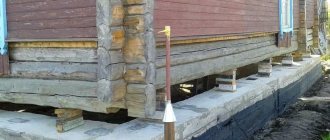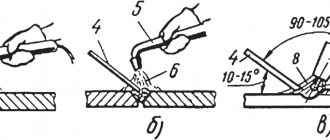When it comes to renovating a bathroom or toilet, most people face the problem that the plumbing fixtures' pipe outlet levels change. This occurs as a result of changing the floor level and rearranging equipment. One way or another, in this case the question arises of how to raise the toilet higher. In this article we will give you practical advice on how to deal with this problem yourself at minimal cost.
How to lift a toilet? There are several approaches to solving this issue
To eliminate the problem of incompatible fittings, you just need to use modern adapters. If you are faced with the fact that the axes of the pipeline do not coincide, you should use a flexible hose system or create a new pipe gasket. The level of future placement of your plumbing depends on how well these holes coincide.
To achieve the required matching of pipes, you can use one of three options:
- create a new installation location at which the appropriate level will be maintained;
- install a wall-hung toilet;
- use a system of adapters and pipes.
What can you use to make a toilet stand to raise it higher above the floor?
A regular compact toilet with installation on the floor.
You need to raise it a few centimeters from the floor, what can you use to make a toilet stand?
First, decide how high you need to raise the toilet.
And also decide on the specific reason for changing the height of the toilet.
In some cases, you can do without a toilet stand (we are talking about toilets with floor mounting).
If you missed the purchase of a toilet, and did not take into account that the sewer pipe goes above the toilet outlet, then you can buy eccentrics (cuffs) that can add a few centimeters in height.
Or connect the toilet to the sewer through a corrugation.
If all these options are not suitable, then the supply can be purchased as a finished product, like this
Part-time material, ceramics raise the toilet to a height of 60 mm (6 cm from the floor).
Instead of a purchased stand, you can make a “pedestal” out of brick; after drying, the brick can be tiled.
I bought red solid brick.
Even better, from concrete, we mark the floor, install formwork, reinforce it, pour concrete.
After drying, this concrete stand can be tiled and then the toilet can be installed.
The stand can be made of wood (this is how toilets were installed during the Soviet Union), you need a board of suitable thickness.
If the stand is not high, then plywood will do; I made the stand from plywood 20 mm thick.
Be sure to sand the plywood and pay special attention to the ends.
I do not recommend using chipboard or MDF.
The main thing when choosing a material for making a stand is the height to which you need to raise the toilet.
Installation features
Actually, most of the information has already been told, all that remains is to assemble the purchased components in accordance with the design idea.
Pipes are assembled from the riser (inlet pipe) towards the consumer. In other words, the pipes that are closest to the drainage point into the common house riser are installed first.
At each connection, the pipe should fit into the socket of the previous one by approximately 50 mm. If the cuff in the socket is too tight and you cannot insert the outlet, then you need to lubricate the cuff with liquid soap or detergent - things will go much easier.
Plastic pipes are cut using any available means: a grinder, a hacksaw. You can even do the cutting with a regular wood hacksaw. The main thing is to clean the cut edge from all kinds of burrs - burrs inside the pipe will cause blockage, and burrs on the outside will prevent the parts from being assembled properly.
Some craftsmen practice applying silicone to the cuffs of assembled parts - supposedly the joint becomes even more airtight. I would like to note that the collar joints that any sewer plastic pipe is equipped with do an excellent job without silicone
. Therefore, it is still recommended to refrain from amateur activities.
In some situations, it is necessary to secure two parts together so that during operation one does not come out of the other. This should absolutely not be done using self-tapping screws, which some craftsmen screw into the end of the socket. The sharp tip of the screw sticking out inside the pipe will collect hair and cause a blockage. If for some reason the assembled unit experiences mechanical stress to “undocking”, both parts need to be secured using brackets or other fastening techniques.
To form and control the required pipe slopes, it is very convenient to use a laser level. Having built a horizontal beam slightly higher than the horizontal beam, you can control the slope by placing a tape measure on the controlled areas and comparing the distances from the pipe to the beam.
That's basically all. We have covered the main points of installing a sewer system in a bathroom, and perhaps I will add something over time.
How to make a toilet a little taller
When it comes to renovating a bathroom or toilet, most people face the problem that the plumbing fixtures' pipe outlet levels change. This occurs as a result of changing the floor level and rearranging equipment. One way or another, in this case the question arises of how to raise the toilet higher. In this article we will give you practical advice on how to deal with this problem yourself at minimal cost.
To eliminate the problem of incompatible fittings, you just need to use modern adapters. If you are faced with the fact that the axes of the pipeline do not coincide, you should use a flexible hose system or create a new pipe gasket. The level of future placement of your plumbing depends on how well these holes coincide.
To achieve the required matching of pipes, you can use one of three options:
- create a new installation location at which the appropriate level will be maintained;
- install a wall-hung toilet;
- use a system of adapters and pipes.
Suspended structures: installation procedure
This issue can be solved by two methods - using an installation or a concrete base.
In the first method, a special structure is created that changes the level of the device in height and secures it. Installations are easily secured with plasterboard. Everyone will figure out how to raise the toilet higher.
To construct a concrete base, you cannot do without additional materials.
You will need:
- Two steel pins, caliber M20, 0.8 meters long.
- Wood screws.
- Formwork.
- Washer.
- Screw.
- Concrete solution.
The transition coupling connects the toilet and the sewer - this is the action of the first stage. Afterwards, they decide on the place to which the studs will be attached on the wall. The best option is to drill through. If this option is unacceptable, proceed to the use of epoxy glue.
Two side and one front surface are required for formwork. The studs help pull it to the wall. Then these same parts become the support for the wall-hung toilet.
Concrete is poured gradually, then you don’t have to worry about displacement of the transition coupling. The formwork is left for seven days until the concrete is completely dry.
Beginning of work
Before any work, it is necessary to properly prepare the workplace. In our case, everything that is not related to the installation must be removed from the room. It is best to work in a completely empty room. To change the product level you will need:
- chisel;
- hammer;
- wrench;
- level;
- felt-tip pen;
- knife;
- screwdriver;
- Bulgarian;
- sandpaper;
- device for pumping water (rubber bulb);
- sealant;
- cement and sand;
- washers, bolts and so on.
Sequencing
Before looking for the answer to the question of how to lift a toilet, you must disconnect it from the sewer and water supply. To do this, you need to turn off the water supply and disconnect the main pipe on one side from the tank, and on the other from the water supply. Next, take care to remove all remaining water from the product. For this you will need a rubber bulb and a regular rag. If you leave even a little water inside, it will definitely spill out during transportation.
In most cases, a floor-mounted toilet is mounted on a wooden base or concrete screed above the flooring surface. It is attached to the sewer in one of the following ways: with a plastic pipe, corrugation or rubber adapter. To disconnect the plumbing from the sewer, you need to remove the pipe or remove the corrugation. If you cannot complete these steps, then simply cut off the unnecessary parts, turn the four bolts at the base and remove it. If the bolts do not come out, then you will need a hammer and chisel. Using gentle movements, break up the concrete or cement coating under and around the toilet. You can also use a drill or hammer drill, but you should be extremely careful.
Next, clean the inside of the pipe that remains from the old seal and dirt. After cleaning, cover it with a plastic bag. This will eliminate the possibility of construction debris getting inside, as well as the release of an unpleasant sewer odor. Now remove all debris and remnants of old materials to prepare the area for installing the plumbing at the new level.
Taking it to the next level
Select a location for installation. To begin with, the product is placed on wooden blocks to ensure that it is taken to the next level. Make sure that the product is horizontal. To do this you will need a building level. It is best that the axes of the sewer hole and the toilet drain pipe coincide. If you cannot line up the matches perfectly, then use adapter flexes. Next, remove the toilet and measure the thickness of the pads to create a new level for the plumbing.
Second stage: workflow
First you need to prepare your workplace. To do this, you need to remove all things that may interfere with the installation of the device on a new floor. The best option is when there are no objects in the bathroom or toilet.
The work technology is as follows:
- First, the toilet is disconnected from the water supply and sewerage system. To do this, turn off the water supply to the device’s tank, close the central valve and remove the hoses going to the float on the tank.
- It is necessary to remove all the water that remains there from the device. To do this, use a rag and a rubber bulb.
- Then remove the fastenings on the base of the device. Usually the toilet is mounted on a wooden board or concrete screed. If the old fasteners cannot be removed, then they are cut off with a chisel and hammer.
- After this, you can disconnect the device from the sewer. To do this, remove the outlet of the device from the sewer pipe.
- The old cement coating must be removed.
- It is recommended to thoroughly clean all pipes from dirt and old seals.
- After the floor in the room has been raised to a new level, you need to place the toilet on wooden blocks in the location chosen for installation. The horizontality of surfaces is checked with a building level.
- If it is not possible to accurately align the exit axes of the toilet device with the sewer pipe, then it is best to use a flexible plastic accordion. In some cases, it is better to use rubber corrugation. Sometimes it is possible to make a fairly acceptable adapter from two standard pipes (for example, 135 ° each), which will allow you to accurately align the axes of the sewer pipe and the outlet of the toilet fixture, but then you will need to take care of good sealing of the joints.
- Then you will need to fix the toilet on the new floor. The base of the device is outlined with a felt-tip pen, the attachment points are marked, and then holes are drilled. The device is secured with bolts or dowels.
- Secure the entire system. For this you can use cement and sand. Increasingly, many people attach the toilet to the floor using silicone glue, but this is not always convenient. Sometimes a foam block is used, as it is easy to cut with a hacksaw.
- After the above work, you need to connect the device’s tank to the water supply network using hoses.
Wall-hung toilet
Most modern experts recommend using a wall-hung toilet to change the level of the structure. It can be done in two ways:
- using the installation system;
- creation of a concrete base.
The installation system involves fixing the toilet in a special structure, with which you can adjust the level of the device and then fix it.
This way you can accurately adjust the correspondence between the holes of the toilet drain pipe and the sewer pipe. After you secure the system at the required level, you can hide it with sheets of drywall, choosing any coating for this.
To make a concrete base for a wall-hung toilet, you will need:
- two steel studs (thread - M20, length - 80 cm);
- wood screws;
- material for base formwork (plywood or board);
- concrete solution;
- nuts and washers.
At the beginning of the procedure, you should install a transition coupling between the toilet and the sewer. Next, carefully select the location of the studs for fastening. Studs should be installed into holes in the wall. It is best for these holes to be through. Otherwise, glue must be used. For the formwork you need to create three planes - two side and front. This is where plywood or board will come in handy. Fastening pins hold the formwork to the wall. In the future, they will serve as a support for the wall-hung toilet.
Now you need to try on the wall hung toilet to check the stud holes. To prevent debris from entering the sewer, place plastic bags over all openings. Concreting the formwork must be done gradually. This way you will eliminate the possibility of the drain coupling moving from its axis. The formwork must hold the structure for at least a week until the concrete has completely set.
Now all you have to do is secure the wall-hung toilet to the studs. Do not forget to treat all toilet and sewer connections with a special construction sealant.
As it becomes clear, you can find the answer to the question of how to lift the toilet yourself. If you have ever encountered a similar problem, share your comments with the readers under this article.
Final installation
Before finally installing the toilet, it must be connected to the cistern. In order to make sure that the assembly was carried out correctly, you should fill the tank and keep it in this state for at least an hour. There shouldn't be any leaks. When installing the toilet on the supporting surface, holes for screws and dowels are made in place. The toilet is installed in the intended location and the contours of the holes and base are marked with a marker or pencil. The toilet is then removed and the holes are drilled. When drilling a base of ceramic tiles, drilling is first carried out in a non-impact mode, and after deepening more than the thickness of the tile, the impact mode can be used. The toilet is installed in place and the mounting screws or bolts are screwed in. Screwing is carried out carefully due to the fragility of the material. Rubber toilet gaskets are placed under the bolt heads. Here it is better to under-tighten than to over-tighten. If the toilet is stationary, then further tightening is not necessary.
It is better to connect to the water supply using flexible reinforced hoses with union nuts. All connections need to be checked. If a leak is detected from the drain tank, then you need to check the correct location of the gaskets. If the toilet is loose, tighten the fasteners slightly. If the dowels are not fixed, then the installation will have to be done again, updating the concrete screed. Water stagnation in the toilet may be due to the toilet being installed too low.
Basic ways to raise the toilet higher above the floor
Raising the toilet above the floor level is carried out in several ways:
- Creating a new place to install a toilet with the appropriate level is a complex process, involving a partial restructuring of the apartment's engineering system.
- Installing a new hanging-type product is a common solution to this problem, which requires additional installation, possible restructuring and dismantling of sewerage systems.
- Construction of a pedestal is used less frequently, as it requires certain skills in finishing work, special materials and dry mixtures (if the podium is made of cement or concrete). The task can be simplified many times if you use foam blocks for the podium.
- The use of special plastic gaskets is a frequently used option, which is chosen due to ease of functionality and installation, availability and popularity. Suitable for cases when it is necessary to temporarily create a certain height of the toilet due to the physical characteristics of a person (for example, children, elderly people, disabled people living in an apartment with other residents).
- Using pipes and adapters - just like in the first option, you will have to spend a lot of time and effort on carrying out plumbing work to connect pipes and change the utilities in the apartment.
Plastic toilet seats and spacers to increase height
A simple and affordable way to raise the level of the toilet. There are children's stands that will help a small child sit on a large toilet , as well as classic adult ones - for the elderly and people with disabilities .
How do they look
The stand is a frame with a seat of the desired shape and height . If necessary, it can be equipped with a step. In some cases, a special type of attachment is used, which has a more complex shape and a separate adjustment system.
Photo 1. Children's stands, which will help a small child sit on a large toilet, are often sold as a set of a seat and a step.
Advantages and disadvantages
The advantage of the stands is that there is no need to dismantle the plumbing . They are suitable for models of all types and shapes. Stands are used in cases where people living in an apartment need different levels of toilet height. With the help of pads, you can easily change the height and configuration of the toilet seat , and also significantly increase the level of convenience and comfort for each family member.
The only disadvantage is that more complex linings with handrails or steps can take up additional space in the toilet room .
How to install
Installation of the attachment depends on the type of structure. The general principle is that the product is placed on or above the product bowl . The person using it will need to sit not on the toilet itself, but on this stand.
In general, the installation process is quite simple and the user will only need to study the instructions that come with the product.
Toilet seats and nozzles
This method is suitable for raising the level, while the bowl remains in place.
There are options on the market for children. They come with a step (step). Such seats are needed to reduce the diameter, which allows the child to sit comfortably.
There are special toilet seats for the elderly and people with special needs. Not only can they raise the level of the sitting surface up to 12 cm, but they also have handrails. Such attachments are easily attached to the bowl, but the handrails do not look particularly reliable - it is better to mount them to the wall and floor.
There are attached structures, they are more reliable and allow you to adjust the height of the handrails and the angle of inclination.
How else can you raise the toilet higher: a pedestal
Installing a pedestal for the concept of a toilet involves dismantling the plumbing fixture and then placing it in the same place, but only at a slightly higher height.
What can it be made from?
Often pedestals are made from cement and concrete mortars . In addition, there has been a tendency to make pedestals from foam blocks. This method is the easiest to implement.
Photo 2. Before building the pedestal yourself, in order to avoid mistakes, you need to measure and transfer the contour of the lower part of the toilet.
How to install it
To begin with, calculate the height of the rise and select a foam block in size, from which the base of the future podium will be formed. Then the toilet is disconnected by removing the corrugated pipe leading to the sewer and unscrewing the bolts that secure the device to the floor.
Important! The toilet is disconnected from the water supply and sewerage system. Before doing this, you need to turn off the water .
The contour of the lower part of the product is outlined on a piece of foam block of a given height. Then the part is cut out and applied to the base for comparison. I process the edges of the workpiece until smooth. The finished element is glued to the floor. After the glue has dried, the toilet is placed on the resulting podium and secured with dowels. The edges of the pedestal are aligned under the toilet so that the structure does not look like an alien element, but looks harmonious as a natural extension or part of the plumbing.
Attention! It is important to align the edges as much as possible so that the pedestal merges with the toilet. Subsequently, if this is not observed , the appearance of the unjoined edges will attract attention.
Podium
The podium is not only reliable and extremely durable, but also beautiful and aesthetically pleasing. There are no secrets or know-how in how the toilet is attached to the podium. The installed toilet is checked to ensure there are no leaks or problems with drainage. Then take any sealant or light installation plumbing adhesive and use it to treat the areas where the bathroom comes into contact with the floor. Next, to the desired height, the height under the toilet rim is taken as standard, a podium is laid out of brick - they are attached to each other and to the floor with cement mortar. The surface and sides of the podium are decorated according to preference with tiles, tiles or mosaics. Such fixation can withstand weight up to 400 kg.
What is better: install a traditional model or immediately choose another?
There are different options available to raise the toilet to the desired level. All methods are relatively simple to implement , so almost anyone can cope with them.
If a large-scale renovation is underway at home and you need to save bathroom space , then pay attention to hanging options that can be installed at the required height . It is worth noting that such devices require installation. If the structure of the wall allows such a restructuring, then this option will be more acceptable and convenient .
Sanitary standards
What does the law say? Construction, sanitary and hygienic norms and rules establish a number of restrictions related to the transfer of plumbing fixtures. Damage from leaks and noise should be kept to a minimum.
The following rules help you figure out how to lift the toilet under any circumstances.
Bathrooms should not be located directly above living rooms and kitchens. This is only permissible for apartments on two levels. Thanks to this standard, the lower rooms are protected from possible flooding.
The size of bathrooms and kitchens cannot be changed at the expense of rooms located nearby. That is, the area of the bathroom can only be increased if it is combined with a bathroom. You can attach parts of storage rooms and corridors.
If the standards are still violated, then additional waterproofing for the premises becomes mandatory. Waterproofing is applied to the walls no less than 30–40 centimeters. Then the joints delimiting the rooms will be protected.
How to install a toilet with your own hands: a step-by-step algorithm of work
Step-by-step algorithm for installing a toilet installation: block, frame types
Step-by-step recommendations for installing a toilet in a private home
How to choose an installation for a toilet
What is a corner installation for a toilet: description of the design, how to install
How to lift a toilet yourself
When, as a result of a back problem, it is difficult to sit on the toilet due to the standard height, the question arises of how to raise the toilet higher. In this article we will give practical advice on how to raise a toilet with your own hands and available materials.
Before dismantling the toilet and preparing a place for a new installation, it is necessary to determine the lifting height. To do this, we place improvised objects on the toilet and determine the height of the rise. We disconnect the water supply and sewer lines from the toilet, turning off the water. Remove the remaining water in the toilet with a rag. The toilet is fixed to a wooden stand using self-tapping screws. The outlet from the toilet to the sewer is made of a corrugated adapter. To disconnect, tighten the corrugated pipe. Unscrew the bolts and remove the toilet.
Do-it-yourself toilet lifts
We carefully place the toilet on the foam block and trace the lower contour with a marker. Then, using a hacksaw, we cut out our stand in the foam block. We try on the resulting blank and sand the unevenness so that it looks like one with the toilet.
Now let’s prepare the base for installation by clearing the area of dust and leveling the surface for the toilet. Having tried on the workpiece, apply the adhesive to the floor and wait one minute to fasten the part to be glued. We remove the remaining glue and, using a level, level the surface of the podium. Let our structure dry according to the instructions for the adhesive composition. After complete hardening, we try on our toilet bowl and mark the hole, Drill a nail under the dowel for fastening. Apply sealant to the sole of the toilet bowl, install and fasten it using self-tapping screws. Then in the reverse order as we took it apart. We putty the podium using drywall putty, and we can paint it the color of the toilet. This design is reliable and does not spoil the appearance.
Posted 4 comments
All of the above methods for raising the toilet can be easily done with your own hands. But if a person does not have time to do this or does not know how to do it, then it is better to call a plumber. True, in this case the financial costs will be much higher, but the quality of the work will also be higher.
I need to raise the toilet by 10-12 cm, which is in excellent condition, and the described method tires me out, but I am 80 years old and my husband is disabled. We cannot do this ourselves. Please send a master who will do this work for the appropriate fee.
How to install a toilet in a private house on a wooden floor
If the floorboard is thick enough (40mm or so), you can attach it directly to the flooring. This will not work with a thin one - insufficient thickness will not provide the required degree of fastening reliability. After all, the toilet platform usually has two holes for installing fasteners. Less often there are four.
How to install a toilet in a private house on a wooden floor
Therefore, in this case, they take a piece of a thick board, attach the toilet bowl through it, and the board itself around the perimeter to the floor. There is even a special name for this board - it is called “taffeta”.
The resulting pedestal can be finished in the same way as the floor. But the rounded shape of the toilet “leg” is not very harmonious with the rectangular shape of the taffeta. If you want this method of fastening to look more organic, before fastening the taffeta can be cut to the shape of the base. The edges can be made straight, or they can be smoothly expanding downwards. In general, it’s up to your discretion.
First stage: choosing options
In order to raise the toilet a little higher, you need to align its outlet with the outlet of the sewer pipes. This can be done in several ways:
- Use a flexible plastic accordion. This will allow you to install the toilet at any desired height, but the reliability of the entire system will depend on the quality of the plastic accordion, and the device itself will be moved slightly forward, which is not always convenient for small toilets.
After a person decides and chooses the most suitable of these three options, he needs to prepare tools, devices and materials, and then begin to implement the plan.











